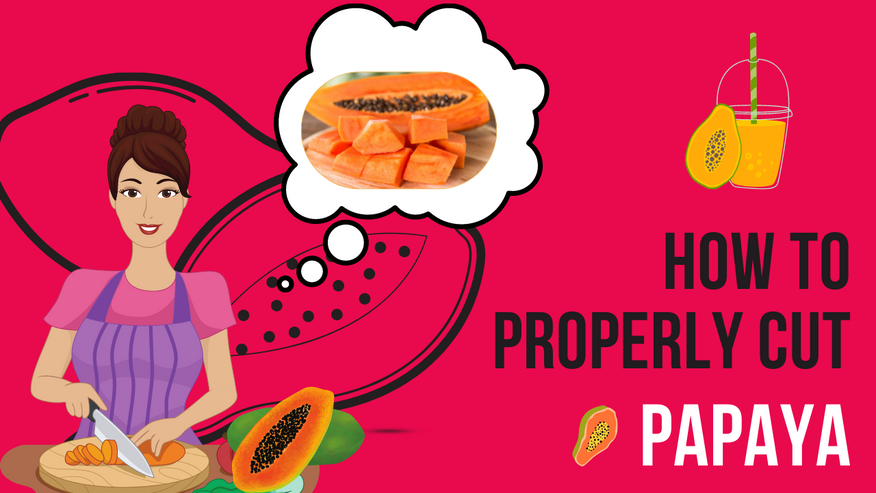May 24th 2022 - Monica Cunanan
How to Properly Cut Papaya
Papayas are delicious, but how many people know how to cut them up? Papaya is easy to peel, easy to cut, and easy to prepare. The papaya tree, also known as the Carica papaya plant, is native to Central America and Southern Mexico but is now grown in many other parts like Thailand and the Philippines.
This fruit is characterized by yellow-orange to green colors and has black seeds that are edible but bitter. Papayas are a tasty tropical fruit that is often served as a dessert but can be used in many dishes.
They're usually sold in stores during the summer months. There are many different ways to enjoy this delicious tropical fruit and on top of that, there are many health benefits of papaya. Before we proceed to our cutting guide, let's first figure out how to differentiate unripe papayas from ripe papayas.
How to Choose a Ripe Papaya
To find the best-tasting papaya, make sure to find out what you would be using for your papaya and when you will eat it. Only purchase the ripe fruit if you are consuming it immediately or opt for buying unripe papaya and hold off eating the fruit until it ripens. Here are some tips to know how to choose the best-looking papayas:
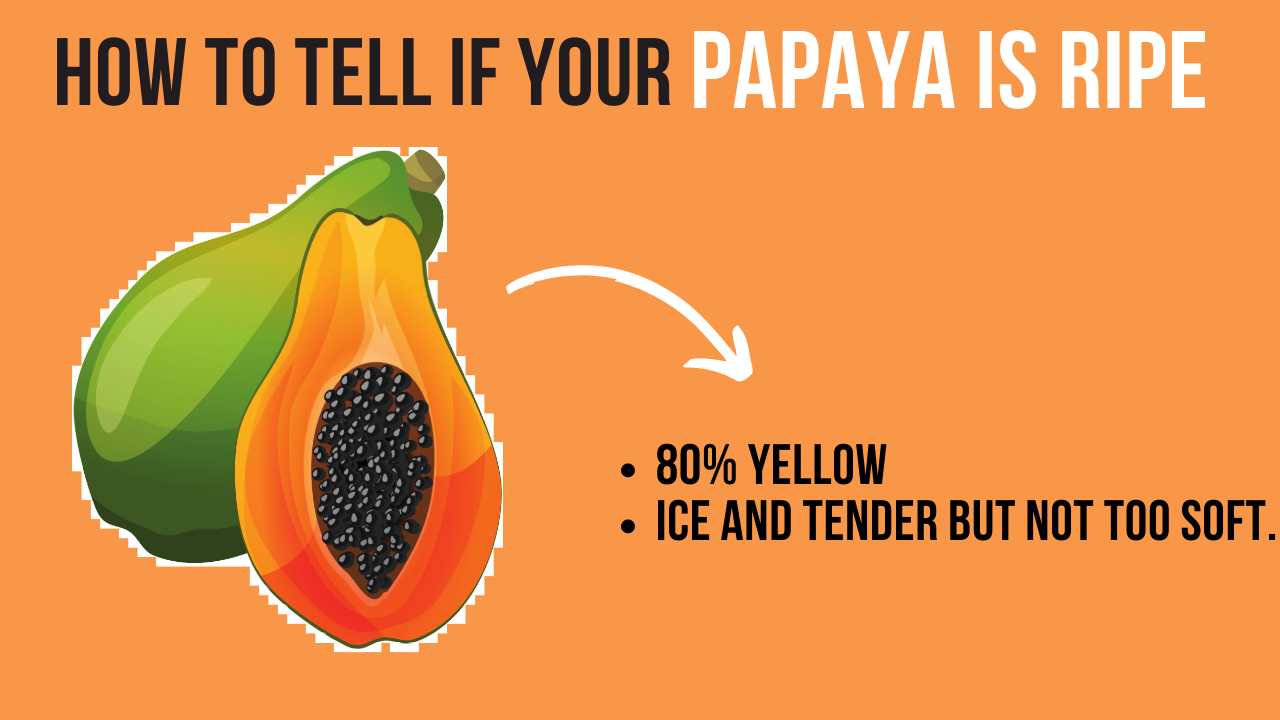
- Unripe fruits have a color that’s a mixture of yellow and green and this applies to papayas
- If your papaya is around 80% yellow, it should be ready to eat. Hawaiian papayas are more pear-shaped than others and turn golden yellow or bright yellow skin when they're ripe and you would prefer the sweet flesh.
- When you are at the papaya stall, take the fruit and gently push it on the skin with your thumb using gentle pressure. The sweet flesh of a ripe fruit should be nice and tender but not too soft.
- Overripe papayas are indicated by black spots or large brown bruises on the fruit. You may also notice a fermented smell emanating from it.
- Un-ripened green Papaya should not be eaten raw as it can make you sick. However, un-ripened Papaya and the leaves of the plant can be eaten once cooked. The flesh will be similar to squash, and the leaves similar to spinach.
Remember to wash the papaya before cutting it. Here are our top three ways to cut papayas:
Method 1: Wedge/Strip Slices
One of the easiest ways to eat papaya is by eating it as wedges or strips. Here's a quick way how to do it.
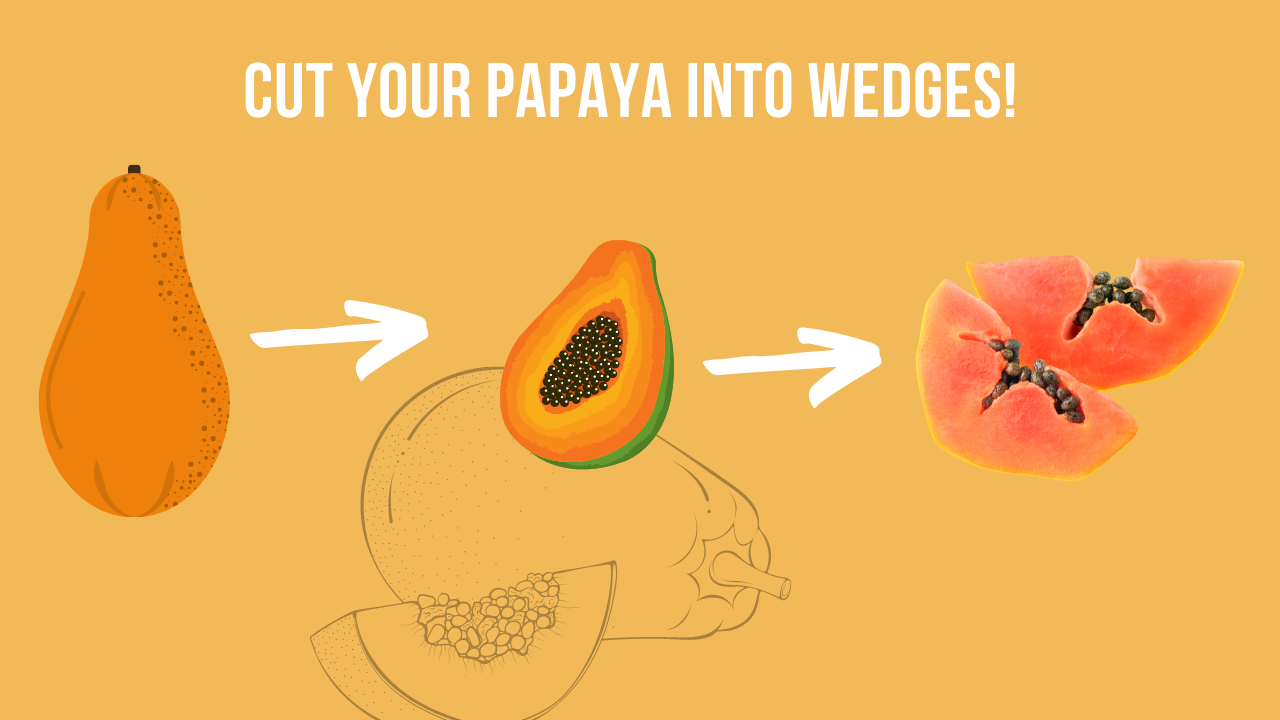
- Cut off the outer skin and the crown of the papaya and set it aside.
- Start by cutting the papaya in half lengthwise.
- Then scoop out the seeds with a spoon.
- Next you can cut the papaya into wedges or slices.
- Papaya is now ready to eat raw.
- You can also cook it like a vegetable and add it to stir-frys.
- You can even grill it or make it into a salsa.
- Papaya is easy to prepare and eat.
This is perhaps the simplest method of keeping your ripe fruit fresh and full of flavor.
Method 2: Cubes
Papaya is delicious and easy to prepare. Additionally, you can crush or grind the seeds before adding them to food.
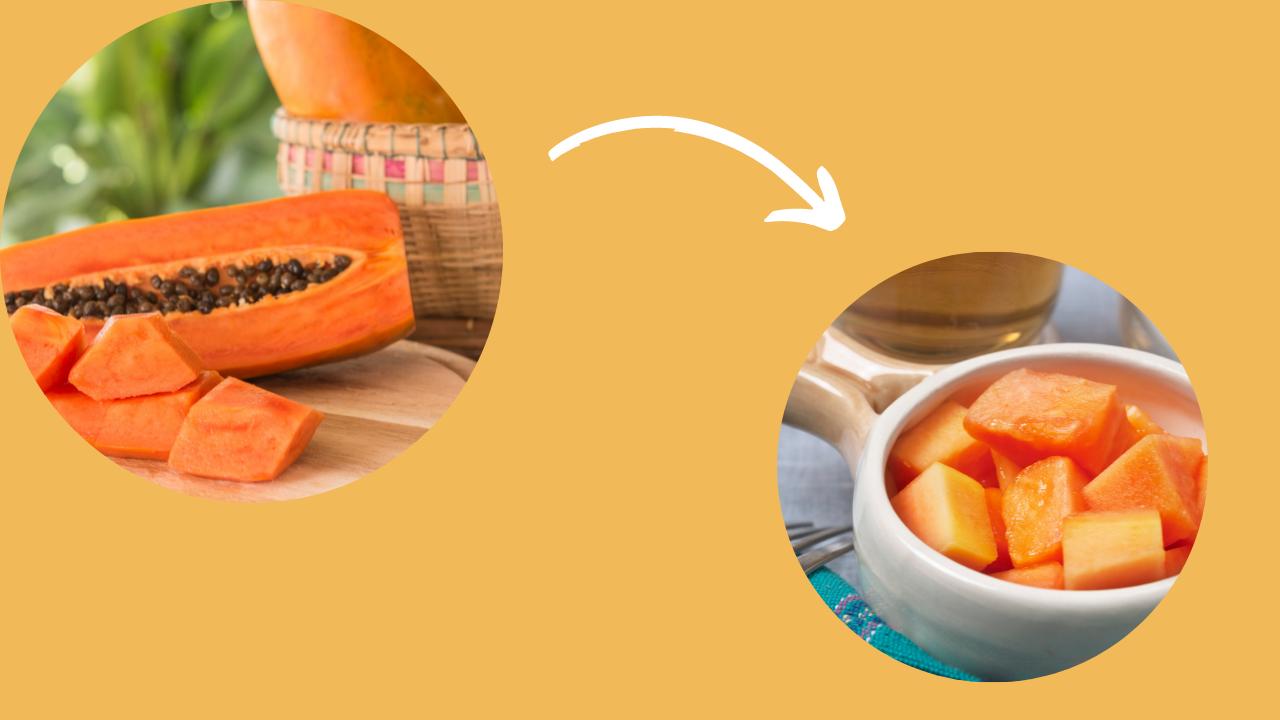
- Cut off the outer skin and the crown of the papaya and set aside.
- Lay the papaya on a cutting board, one of its flat sides down, and use a sharp knife to cut it in half lengthwise.
- Use a spoon to scoop out the seeds from each half.
- Lay one half of the papaya, flat side down, on your cutting board.
- Continue to thinly slice the papaya until you've divided it into long strips.
- Turn each long strip so that it is lying horizontally across your cutting board.
- Chop papaya
- Repeat with the second piece of papaya and serve.
Method 3: Peel!
Use a Vegetable Peeler
If you decide to peel, a vegetable peeler will work best.
- Peel the whole thing like a big potato. It might be easier to use a cutting board when working with papaya.
- If it gets too slippery and out of hand, use a fork to keep it in place while you peel with your other hand.
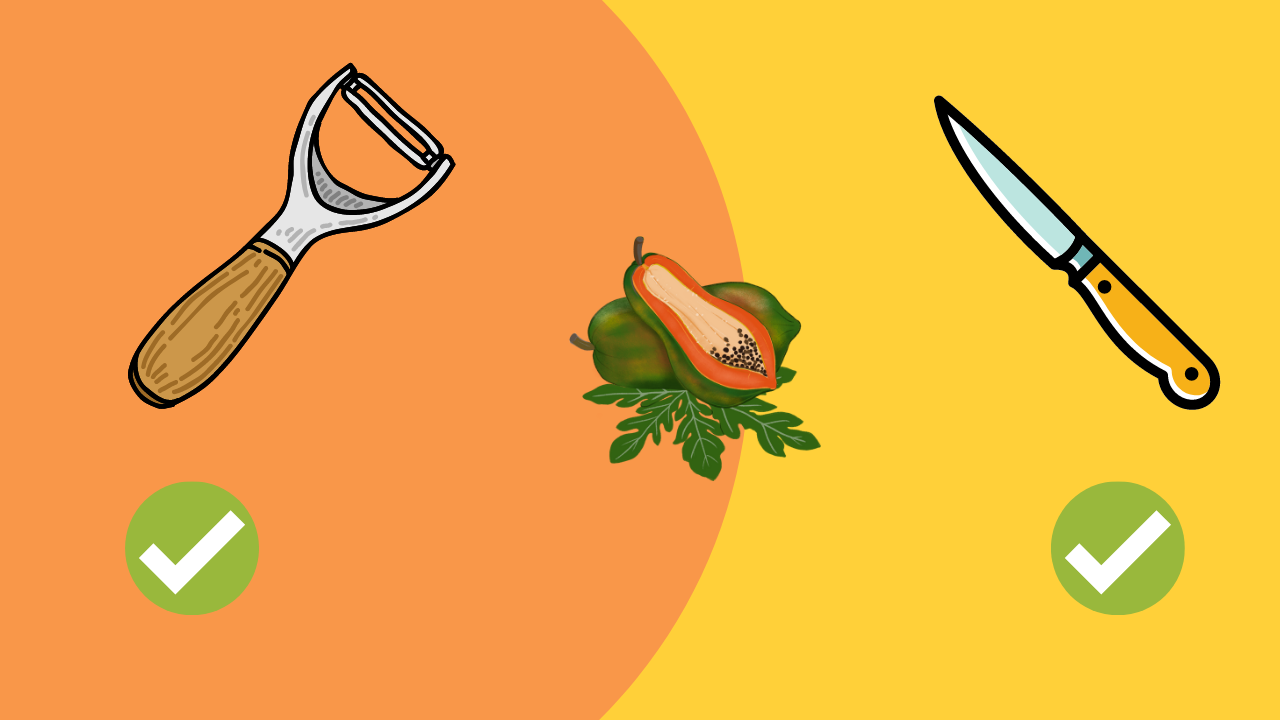
Paring Knife
Use a sharp pairing knife for more control. Never use a blunt knife, because you might cut yourself.
- Cut the top of the papaya off just enough so that the seed is exposed, creating a stable, flat surface for the knife to rest on when cutting the fruit into slices.
- Use your sharp knife and cut long strips of flesh and skin from top to bottom.
- It’s useful to leave a strip of flesh at the top for you to grasp and turn the fruit with, or stab a fork into the top and hold it there.
- When peeling with a knife, be mindful not to press hard because the flesh would be ripe and tender. You don't want to end up cutting away too much of the edible portion! A light stroke is all you need.
Different Ways to Enjoy Papaya
- A Tangy Appetizer. Serve papaya strips with thin slices of prosciutto as an appetizer.
- Drizzle lightly with lime juice.
- Picnic with Papaya! Serve this delicious Avocado Papaya Grapefruit salad at your first spring picnic.
- The Perfect Mobile Snack. Try dried papaya for a sweet treat, or add chopped dried papaya to rice pilaf.
- Do Papaya Popsicles. Freeze spears of papaya on a stick for a summertime treat.
- Get Exotic! Add an exotic twist to your fruit salad with papaya.
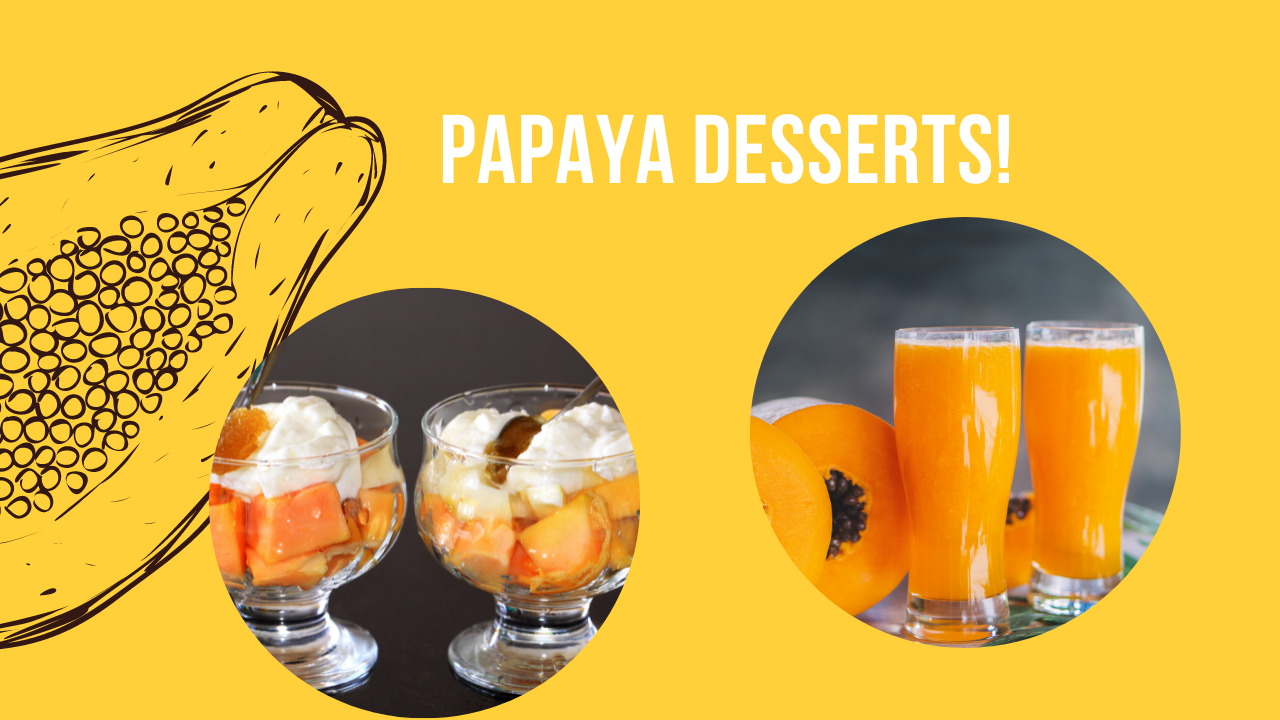
(Checkout: Insanely Good Papaya Recipes)
Health Benefits
Papaya isn’t only good for nutrition, weight loss, or cooking. It also has traces of potassium as well as calcium and acts as a rich source of flavonoids, folate, copper, magnesium, fiber, and pantothenic acids.

This can also lower cholesterol and reduce your risk for heart disease, high blood pressure, and stroke. If you have type 2 diabetes and are looking for ways to help lower your A1C (a two- to three-month average of your blood sugar levels), papaya may help you achieve your goal.
Because papayas are rich in antioxidants, the fruit can help protect cells from damage and lower the risk of cancer. (5) A lower cancer risk is also due to papaya's lycopene, which has anti-cancer properties.
(See more: Health Benefits of Papaya)
Ready To Serve Fruits?
Get ready to impress your family and friends with your newfound talent for making good desserts. Here at Culinary Depot, we provide the tools of the culinary trade for professionals and home cooks. If you'd like to learn more about our cutting and storing ware, contact us today.

